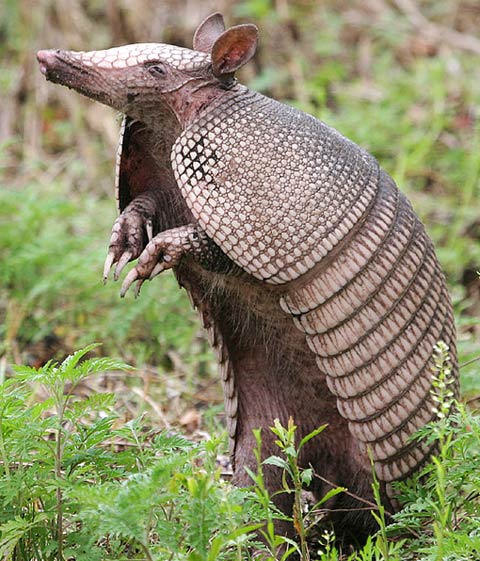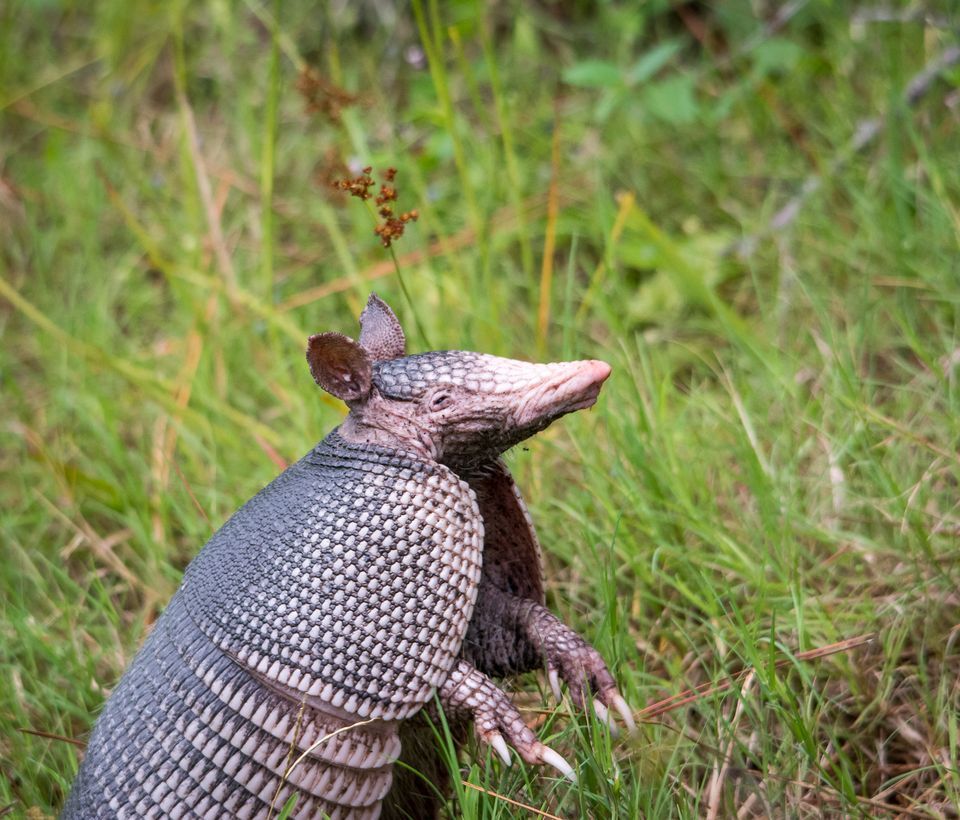

The Smithsonian's National Zoo's screaming hair armadillo receives insectivore diet, insect forage, banana and sweet potato. The Brazilian three-banded armadillo ( Tolypeutes tricinctus ) is an armadillo species endemic to eastern Brazil, where it is known as tatu-bola (Portuguese pronunciation:, lit. Screaming hairy armadillos do not need to drink water regularly efficient kidneys and the ability to retain moisture in the plants that they consume allow screaming hairy armadillos to go long periods without drinking. There have also been recorded instances of these armadillos throwing themselves upon small snakes, which are then cut by the edges of the carapace. Among the less-well-known species are the screaming hairy armadillo, the greater long-nosed armadillo, the southern naked-tailed armadillo, the pink fairy armadillo (which is only about the size of a squirrel), and the giant armadillo (120 poundsa good match for a welterweight fighter). This species has also been observed digging in an unusual fashion-instead of using their legs and claws to expose grubs and insects, screaming hairy armadillos will force their heads into the ground, then turn in a circle to create a cone-shaped hole. Armadillos are vulnerable to attacks by various types of predators, ranging from jaguars to coyotes, wolves, bears, and even large hawks.They can float across.

They are a fossorial species that lives primarily in loose sandy dunes, and this preference restricts their areas of habitation. The nine-banded armadillo, about 10kg in weight at most, are very common in the American South because they have few natural predators other than motor. Screaming hairy armadillos have a few unique methods of hunting they regularly burrow under and sometimes into carcasses in search of invertebrates to consume. Habitat Pink fairy armadillos are found in dry grasslands and sand filled plains. They will also occasionally scavenge for food. were probably very effective in protecting the slow armadillo from predators. Their diet fluctuates seasonally, with insects in the beetle family being the primary part of their diet in summer months and plant material-especially seed pods from Prosopis trees-making up much of their winter diet. The beautiful armadillo (scientific name Dasypus bellus) was a larger.

Omnivorous animals, screaming hairy armadillos will eat primarily plants, insects and small vertebrates such as frogs, toads, lizards, birds and rodents. An armadillo doesn t wear that armored shell for nothing A number of predators, or natural enemies, like to eat armadillos.


 0 kommentar(er)
0 kommentar(er)
